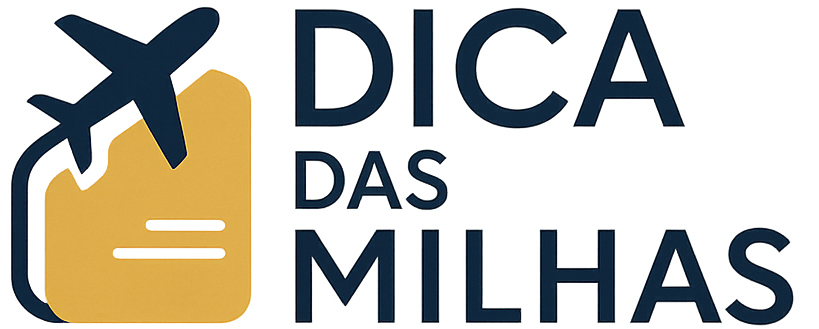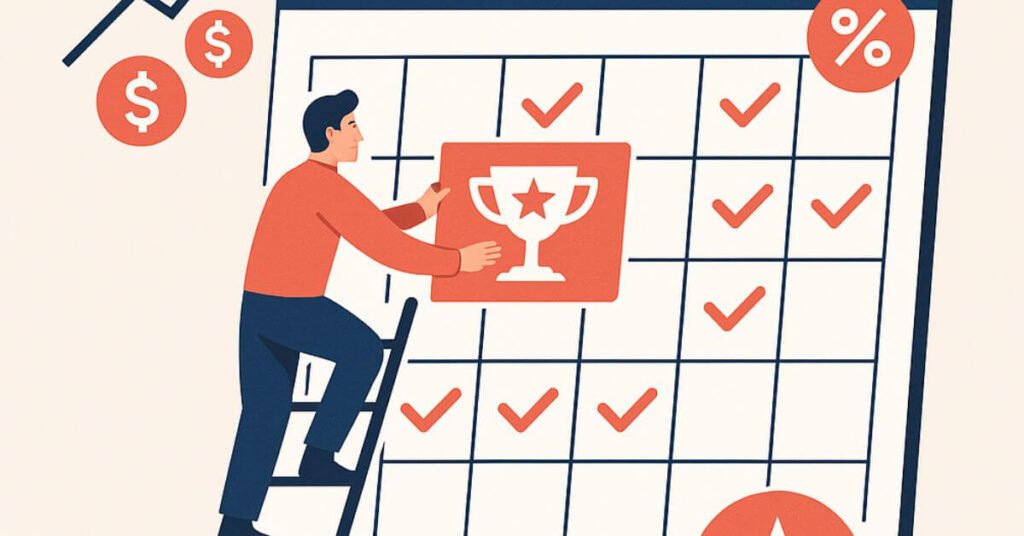Most people treat promotions in loyalty programs as isolated opportunities — something to take advantage of when they happen to appear. But those who consistently travel more, earn more miles, and extract more value from their points are doing something different: they’re planning ahead.
If you want to get the most out of your rewards, you need a promotion calendar strategy — a way to anticipate, organize, and act on deals before they happen. In this article, you’ll learn how to build a long-term promotion calendar to maximize points, how to spot cycles in promo behavior, and how to time your transfers, redemptions, and club upgrades with confidence.
Why You Need a Promotion Calendar
Loyalty programs — whether airline, hotel, or bank-based — follow predictable promotional cycles. If you can anticipate these patterns, you can:
- Transfer points when bonuses are highest
- Redeem awards when prices are lowest
- Avoid unnecessary spend outside promo windows
- Stack multiple offers together
- Maximize club benefits and annual perks
Instead of chasing scattered offers, you build a system where the promotions work for you, not the other way around.
The Core Elements of a Good Promotion Calendar
To set up a reliable calendar, you need to track several recurring promo types and their typical timing:
1. Transfer Bonuses
These are temporary offers where bank points (Livelo, Esfera, Amex, etc.) earn extra miles when transferred to a travel partner.
What to track:
- Which airline received a bonus
- Bonus % (e.g., 80%, 100%)
- Club-only bonus tiers
- Required minimums
- Validity dates
Example:
Livelo → Smiles
100% bonus in January, May, and November (Black Friday)
2. Award Ticket Sales
Airlines periodically offer redemption discounts — often as flash sales or seasonal offers.
What to track:
- Domestic vs. international promos
- Discount % (e.g., 30% off)
- Travel windows and blackout dates
- Taxes and fees
Example:
LATAM Pass promo in March: 40% off flights to Chile
3. Loyalty Club Promotions
Programs like Clube Smiles, TudoAzul, or Clube LATAM often run:
- Discounted sign-up offers
- Bonus miles for subscription
- Exclusive transfer or booking access
- Upgrade incentives to higher tiers
What to track:
- Club price vs. bonus value
- Timing of recurring offers
- Membership start and renewal dates
- Minimum stay period before canceling
4. Shopping and Partner Campaigns
Point marketplaces (Livelo Compras, Esfera Shopping, Smiles Store) often offer 10x–20x points per dollar on certain merchants.
What to track:
- Retailer name
- Earning multiplier
- Payment method restrictions
- Stacking eligibility (e.g., cashback + miles)
- Validity window (often 24–72h)
5. Status Match and Fast Track Campaigns
Programs occasionally offer elite status accelerators — fly or spend within a set period and unlock elite status for the year.
What to track:
- Programs involved
- Minimum requirements
- Challenge deadlines
- Route restrictions (e.g., only GOL-operated flights)
6. Black Friday and Holiday-Specific Promotions
Black Friday, Cyber Monday, and the month of November usually bring the biggest promotions of the year, including:
- Record transfer bonuses
- Club membership discounts
- Massive flash sales on redemptions
- “Stack everything” opportunities
Other notable dates:
- Valentine’s Day (travel-themed promos)
- Mother’s Day and Father’s Day (retail + travel combos)
- Back to school (August/September deals)
- End-of-year (loyalty club retention and rollover bonuses)
How to Build Your Promotion Calendar Step-by-Step
Step 1: Use a Digital Calendar or Spreadsheet
Choose a format that works for you:
- Google Calendar: great for setting reminders and alerts
- Google Sheets: excellent for tracking dates, values, and links
- Notion or Trello: good for visual dashboards and timelines
Create columns like:
- Date
- Promo Type
- Program
- Bonus Details
- Required Action
- Status (Planned / Active / Used)
Step 2: Start Logging Historical Data
Look back at the last 6–12 months. Search your email inbox, loyalty program sites, and blogs like:
- Passageiro de Primeira
- Melhores Destinos
- Promoções de Milhas (Telegram)
- The Points Guy (for U.S. promos)
Log the start and end dates of promotions and their details. Patterns will emerge quickly.
Step 3: Identify Recurring Promo Windows
You’ll start noticing rhythms like:
- Livelo → Smiles 100% bonuses = Jan, May, Nov
- Clube LATAM sign-up bonus = March, June, October
- TAP award sales = April, August
- Esfera retail promos = around Mother’s Day and Black Friday
Block these dates in your calendar in advance and label them by priority.
Step 4: Align Your Travel and Spending Plans
Use your promo calendar to plan trips, point transfers, and purchases.
Examples:
- Need 60,000 miles to go to Europe in October?
→ Transfer in May when 100% bonus is likely
→ Book in August when TAP launches award sales - Want to join Clube Smiles?
→ Wait until January promo offers bonus + discount - Planning to buy electronics?
→ Wait for 15x Livelo at Magalu or Ponto during seasonal promos
Step 5: Set Up Alerts and Notifications
Use:
- Google Calendar notifications
- Gmail filters to label promo emails
- App notifications from Smiles, LATAM, Livelo, etc.
- RSS or Telegram feeds for real-time updates
You don’t have to check every day — but you should get notified when important promo windows open.
Step 6: Create a Yearly Strategy Summary
At the top of your spreadsheet or calendar, define:
- Travel goals (destinations, dates, class of service)
- Points needed
- Expected earning sources (credit cards, shopping, transfers)
- Best promo windows to act
This ensures every promo you pursue has a purpose, not just a good percentage.
Tips to Keep Your Promotion Calendar Efficient
- Keep it simple and color-coded for quick access
- Use conditional formatting to highlight time-sensitive promos
- Archive expired offers but keep them for reference
- Don’t overtrack—focus only on programs you actively use
- Review your calendar monthly and adjust as needed
Real-Life Example: Turning a Calendar Into Free Flights
Lucas, a frequent flyer from Rio, wanted to fly to Portugal in business class by November.
He planned his year like this:
- January: Joined Clube Smiles with a bonus
- May: Transferred Livelo to TAP during a 100% bonus
- August: Used TAP award sale to book Lisbon flight for 110,000 miles
- November: Took advantage of Black Friday promo to top up points for a return flight
Total savings: Over US$2,000 in airfare
Total effort: A few calendar reminders and two strategic transfers
Final Thoughts: Plan the Promo, Own the Trip
Learning how to build a long-term promotion calendar to maximize points is one of the smartest moves you can make if you’re serious about loyalty programs. You don’t need to chase every deal — just the right ones at the right time.
Once your calendar is set up, you’ll fly better, book faster, and earn more — all while avoiding rushed redemptions or wasted points.
In this game, it’s not about who earns the most. It’s about who plans best.
Elaine A. da Silva is a Brazilian travel and finance enthusiast, best known as the creator of the blog Dica das Milhas. With a strong background in personal finance and a passion for exploring smart travel strategies, she specializes in simplifying the world of airline miles and travel rewards for everyday people. Through her blog, Elaine shares practical tips, insider knowledge, and step-by-step guides to help readers save money and travel more efficiently using loyalty programs and credit card points.







